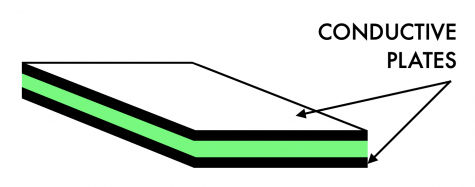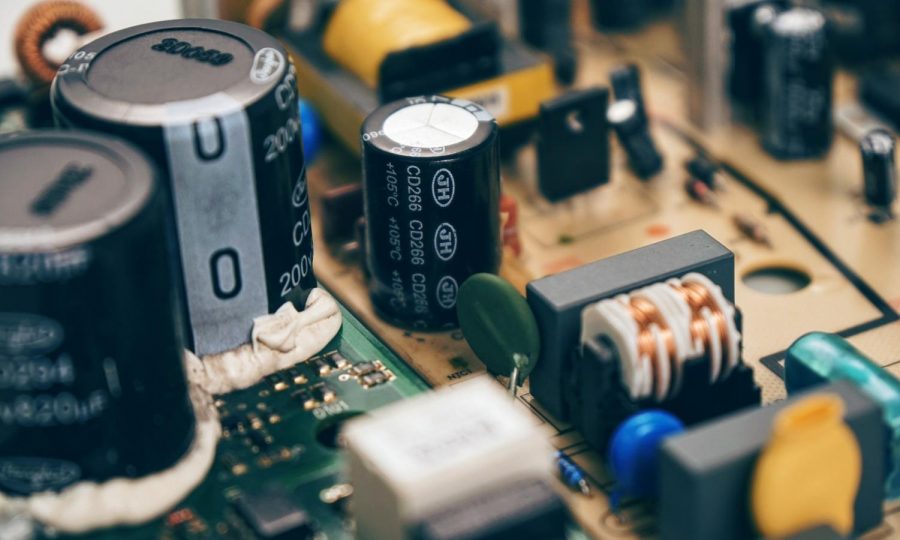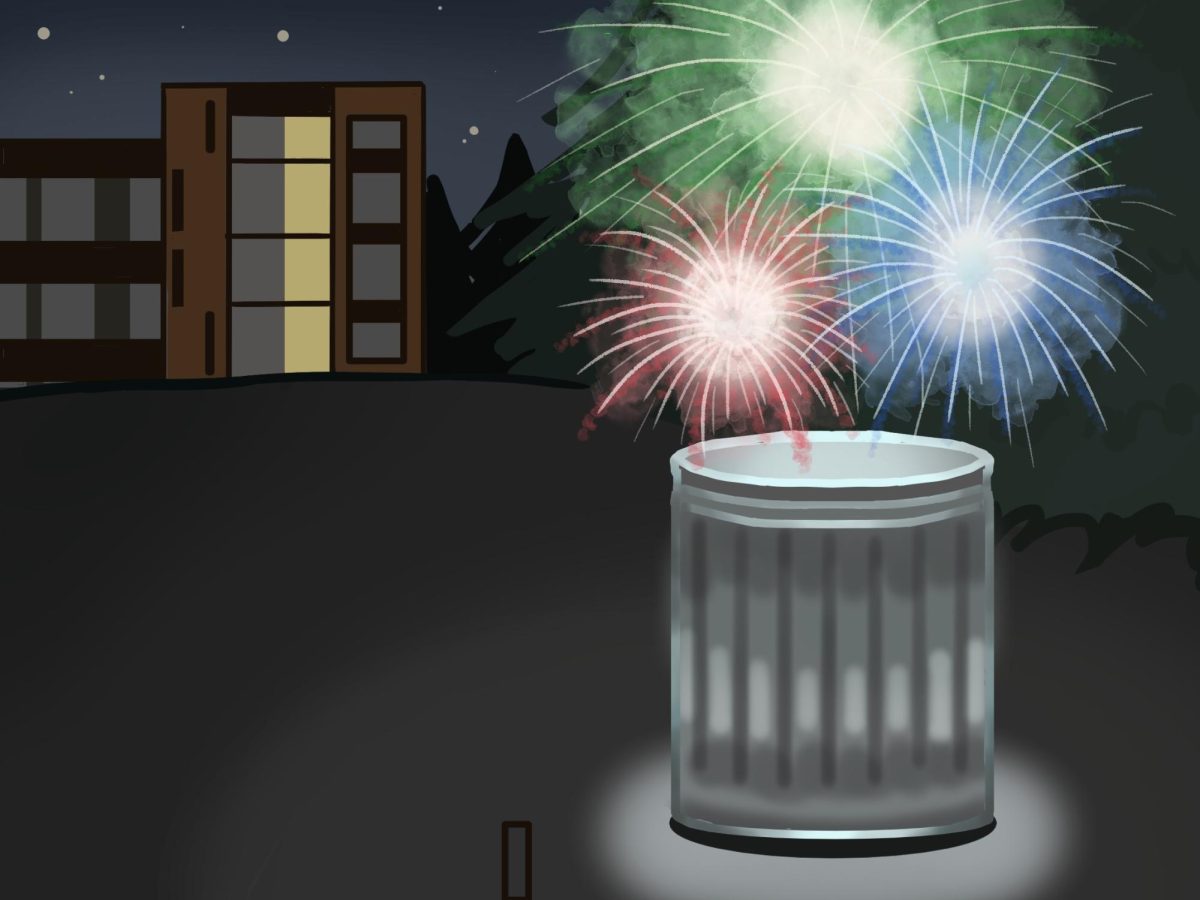In The Know: Projected Capacitive Touch
May 29, 2020
Capacitors are among the first instruments one studies in a first-year electromagnetism course.
You are taught simple equations for capacitance (the amount of charge that can be stored at a given voltage) and the basic function of a capacitor: to store charge. The movement of this “charge” can generate electricity, an important type of energy in our daily lives.
Storing charge is thus analogous to storing energy, as batteries do. However, there is an important difference between batteries and capacitors: batteries store energy in the form of chemical bonds, whereas capacitors store energy through an electric field. The use of the two is therefore different, and tailored to the concepts behind their functionality.

Though a capacitor’s basic function is to store charge, you would not find one supplying energy to your computer. They store relatively little energy compared to a battery and discharge quickly, making them a poor power source for devices we use on a regular basis.
Despite this, capacitors have a broad range of uses, from representing binary information to measuring air humidity.
Projected capacitive touch (PCT) technology is one of the most familiar applications of a capacitor. PCT is used in smartphones and tablets due to its sensitivity and compatibility with screen protectors. The basic concepts are rather simple: you form a capacitor using your finger (or stylus) and the screen of your device, which your device can then register and then translate.
Screens include a conductive matrix (an xy grid composed of conductive material) and a controller. The controller serves to supply the grid with charge and monitor any changes across it. When your finger comes close enough to this grid, you essentially form a capacitor between your finger and the matrix.
Because charge will flow from the matrix into your finger, the charge distribution of the matrix will be affected, which is in turn measured by the controller. Your smartphone can thus react to the movements of your finger across the screen.
PCT is notable in touch-based sensing, but has its flaws. For example, any material that has similar conductivity to your finger can form the other “plate” of the capacitor. Try experimenting with common household objects. If a conductive metal does not register on your touch screen, that is because it does not have similar enough conductivity to a human finger.
A common problem with phone touch screens is how poorly they react in the rain. We can examine this problem using the concepts behind capacitors.
Rain water, like most water, is not pure H2O. It contains a variety of minerals, many of which are conductive. Thus, if your grounded finger comes into contact with a wet screen, it will be able to complete the circuit required to discharge the capacitor.
When you touch a wet patch on your screen, the controller will have a hard time pinpointing the location your finger has just touched because the entire wet patch can register as the opposing plate of the capacitor.
Capacitors can be used to sense a variety of things, and are thus good tools for researchers and engineers alike. The concepts behind capacitors have furthered the development of touch screens, making phones and tablets easier to enjoy.
Though their applications extend far beyond entertainment, it is easy to appreciate PCT technology in the devices that govern our daily lives.






